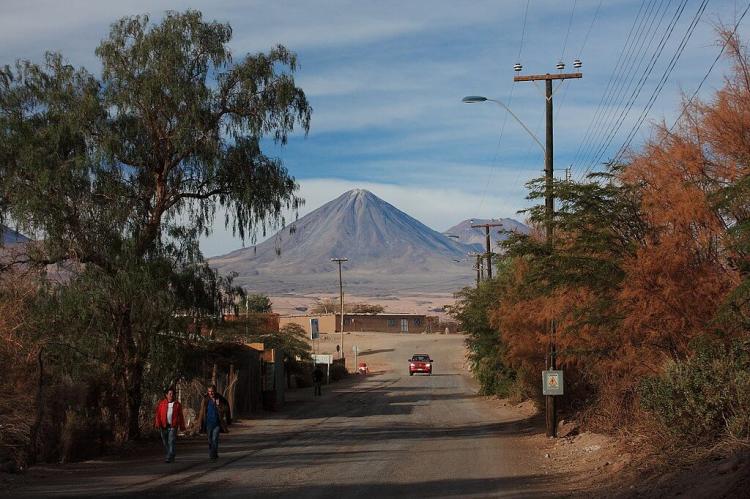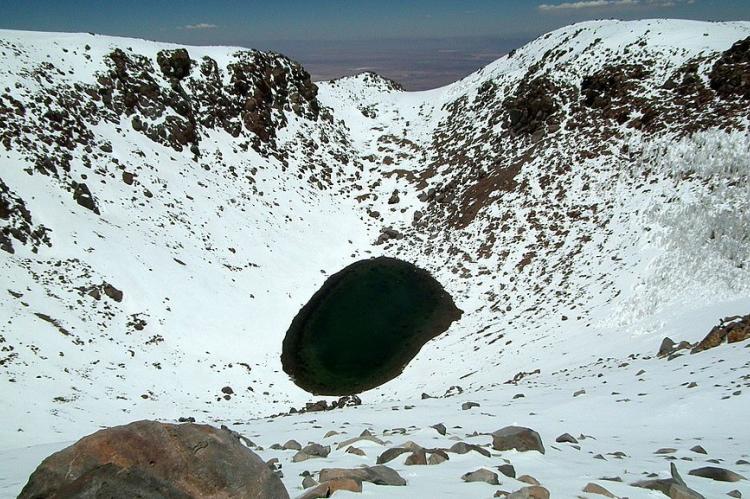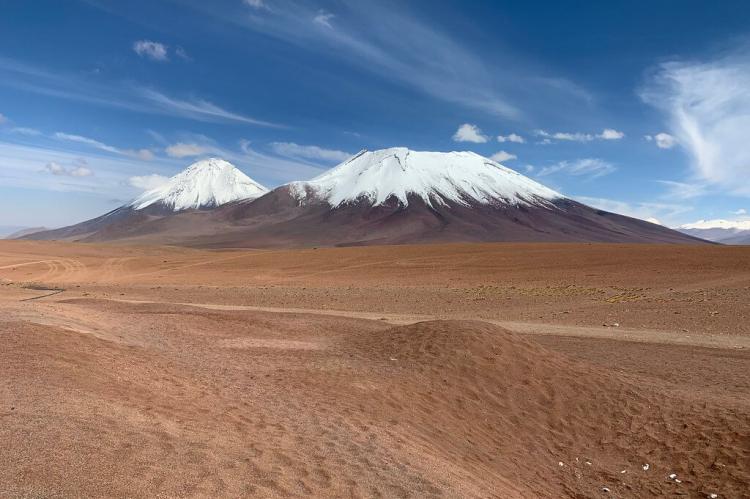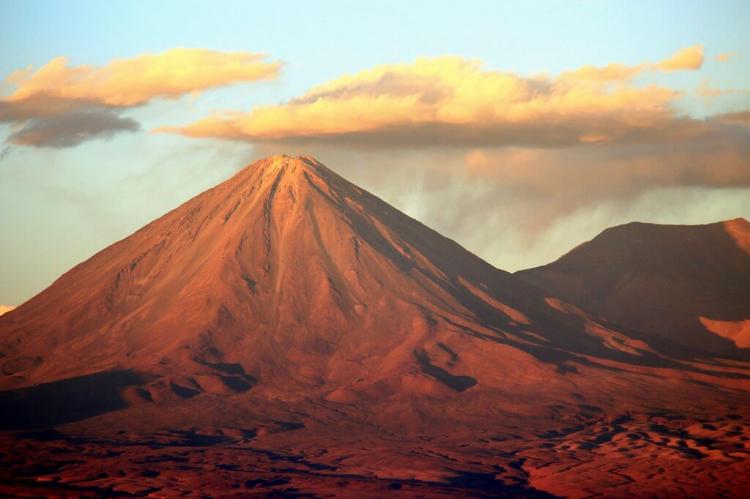Licancabur Volcano: A Sacred Andean Colossus
Towering above the Atacama Desert, on the border between Bolivia and Chile, stands the majestic Licancabur Volcano. With its symmetric cone, this captivating natural wonder is also a sacred site revered by the indigenous Atacameño, who have long held it in high esteem.
Licancabur Volcano: A Sacred Andean Colossus
Towering above the arid landscapes of the Atacama Desert, where the borders of Bolivia and Chile converge, stands the majestic Licancabur Volcano. This imposing stratovolcano, with its symmetric cone reaching an elevation of 5,916 meters (19,409 feet), is a testament to the geological forces shaping the Andean landscape.
Licancabur is a captivating natural wonder and a sacred site revered by the Atacameño people, who have long held it in high esteem. Beyond its cultural significance, this volcanic behemoth offers a unique glimpse into the region's geological history. It serves as a reminder of the delicate balance between the forces of nature and the resilience of life in extreme environments.
Geographical Setting and Volcanic Characteristics
Licancabur Volcano is part of the Central Volcanic Zone, situated at the western margin of the Altiplano, near the Chilean town of San Pedro de Atacama. This region is known for its active volcanism, with several prominent peaks dotting the landscape, including Licancabur's companion volcanoes, Juriques and Sairecabur.
Geological Formation and Historical Activity
The formation of Licancabur Volcano can be traced back through three distinct stages of lava flows. The youngest and most prominent of these are the blocky andesitic lava flows, which extend up to 6 kilometers (3.7 miles) down the northwest to southwest flanks. These flows are characterized by their distinctive levees, which resemble natural barriers along their edges.
Older lava flows, reaching up to 15 kilometers (9.3 miles) from the summit crater, are overlain by pyroclastic-flow deposits that extend for 12 kilometers (7.5 miles). These deposits testify to the volcano's explosive past when superheated gas and ash were violently ejected.
The most recent activity on Licancabur Volcano has produced flank lava flows, indicating ongoing volcanic processes beneath the surface. However, no historical eruptions have been recorded, adding an air of mystery to this ancient mountain.
Summit Crater and Lincancabur Lake
One of the most remarkable features of Licancabur Volcano is its summit crater, which measures approximately 400 meters (1,300 feet) in width. Within this crater lies Lincancabur Lake, a shallow freshwater body that ranks among the highest lakes on Earth. Despite the extreme altitude and harsh conditions, this lake supports a unique ecosystem of planktonic fauna adapted to survive in the cold and highly irradiated environment.
The summit crater bears the marks of human presence, with archaeological sites found within its confines, a testament to the spiritual significance that Licancabur has held for the indigenous Atacameño people over the centuries.
Climate and Ecology
The climate of Licancabur Volcano is characterized by its extreme aridity, intense solar radiation, and low temperatures. These harsh conditions have shaped the vegetation that clings to the volcano's lower slopes, where cushion plants and shrubs have adapted to thrive in this unforgiving environment.
Despite glaciers on many neighboring peaks, Licancabur's slopes remain primarily devoid of permanent ice cover. This is likely due to the combination of low precipitation and high levels of solar radiation, which promote rapid melting and sublimation of any accumulated snow or ice.
Climbing Challenges and Hazards
While Licancabur Volcano's striking silhouette and sacred nature may beckon adventurous souls, climbing this peak is no easy feat. Unlike some of its neighboring mountains, the upper slopes of Licancabur are steep and composed of loose soil and gravel, increasing the risk of landslides and rock falls.
The high altitude and extreme conditions, including intense solar radiation and freezing temperatures, pose significant challenges to even the most experienced mountaineers. Proper acclimatization, equipment, and preparation are essential for those daring enough to attempt the ascent of this Andean giant.
Conclusion
Licancabur Volcano stands as a towering sentinel, guarding the secrets of the Andes and the cultural heritage of the Atacameño people. Its imposing presence, shaped by millennia of volcanic activity, serves as a reminder of the incredible geological forces that have sculpted the Earth's surface. From its sacred summit crater to its ancient lava flows, Licancabur offers a captivating glimpse into the past while embodying the resilience of life in the face of extreme conditions. As a natural wonder and a cultural icon, this sacred Andean colossus will continue to inspire awe and reverence for future generations.





